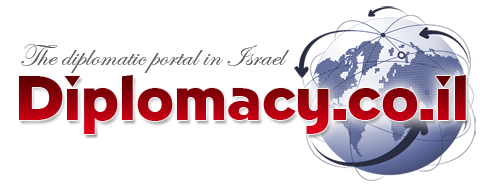Art & Culture
- Details
- Written by Israel Antiquities Authority
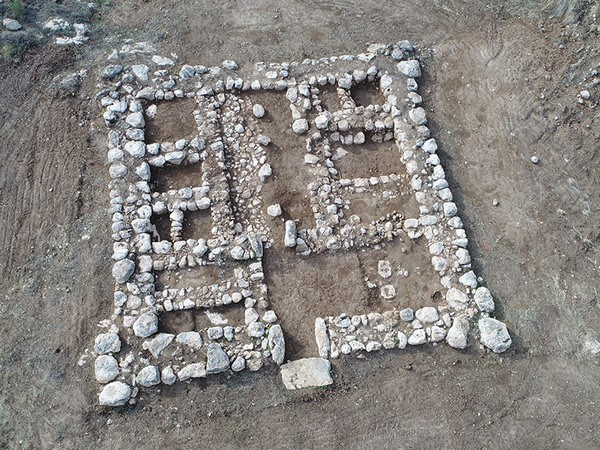
The fortress was built in a strategic location from which it is possible to watch the main road that went along the Guvrin river – a road connecting the coastal plain to the Judea plains
A Canaanite fortress from the middle of the 12 century B.C – The days of the biblical judges, was found by Israel Antiquities Authority and teenage volunteers in an excavation close to Kibbutz Galon, near Kiryat Gat. The site is now being opened for the public free of charge, in a collaboration between Israel Antiquities Authority and the Jewish National Fund (KKL).
According to archaeologists Saar Ganor and Itamar Weissbein of the Israel Antiquities Authority, "The fortress we found provides a glimpse into the Geopolitical reality described in the Judges book, in which the Canaanites, Israelites and Philistines are fighting each other. In this period, the land of Canaan was ruled by the Egyptians and its inhabitants were under their custody. Then, during the 12th century B.C., two new players entered the game: the Israelites and the Philistines. This led to a series of violent territorial disputes. The Israelites settled in non-fortified settlements at the Benjamin and Judean Mountains. Meanwhile, The Philistines accumulated power in the Southern Coastal Plain and established big cities such as Ashkelon, Ashdod and Gat. In an attempt to conquer more areas, The Philistines confronted the Egyptians and the Canaanites on the border line, which probably passed at the Guvrin river, between the Philistine kingdom of Gat and the Canaanite kingdom of Lachish. It seems that Galon fortress was built as a Canaanite/Egyptian attempt to cope with the new Geopolitical situation. However, in the middle of the 12 century B.C. the Egyptians left the land of Canaan and returned to Egypt. Their departure led to the destruction of the now unprotected Canaanite cities – a destruction that was probably led by the Philistines.
According to Ganor and Weissbein, the stories of the judges in the bible demonstrate clearly the complicated Geopolitical reality and the struggle for the control of territories during the establishment of new political powers in the land of Israel. The fortress structure, called Egyptian ‘governor houses,’ is known from other sites excavated in Israel. The fortress was built in a strategic location, from which it is possible to watch the main road that went along the Guvrin river – a road connecting the coastal plain to the Judea plains.
The size of the fortress is 18X 18 m' and watch towers were built in the four corners. A massive threshold, carved from a single rock weighing around 3 tons, was preserved at the entrance of the building. Inside the fortress was a courtyard paved with stone slabs and columns in the middle. Rooms were constructed from both sides of the courtyard. Hundreds of pottery vessels, some still whole, were found in the rooms of the fortress, including special vessels such as bowl and cup that were probably used for religious ritual. A large number of bowls were also found in the rooms, some of which were made in a style copying Egyptian bowls.
The remains of the fortress were uncovered with the help of students form the Israel studies department at the multidisciplinary school in Be'er Sheva, students from the Nachshon pre-military preparatory program and other volunteers. This was done as part of the Israel Antiquities Authority policy to bring the general public, and especially the young generation, closer to archaeology.
According to Talila Lifshitz, director of the community and forest department in the southern region of the Jewish National Fund, "Galon fortress provides a fascinating glimpse into the story of a relatively unknown period in the history of the country and it provides a touristic and experiential attraction for visitors.” The fortress is located in Guvrin forest and was prepared for public visitation in a collaboration between Israel Antiquities Authority and the southern region of the Jewish National Fund (KKL). A picnic area and some explanatory signs were set up to enhance the archaeological experience in nature and in the KKL forests.
Aerial photo of the Canaanite fortress. Photo: Emil Aladjem, Israel Antiquities Authority
- Details
- Written by Steven Aiello
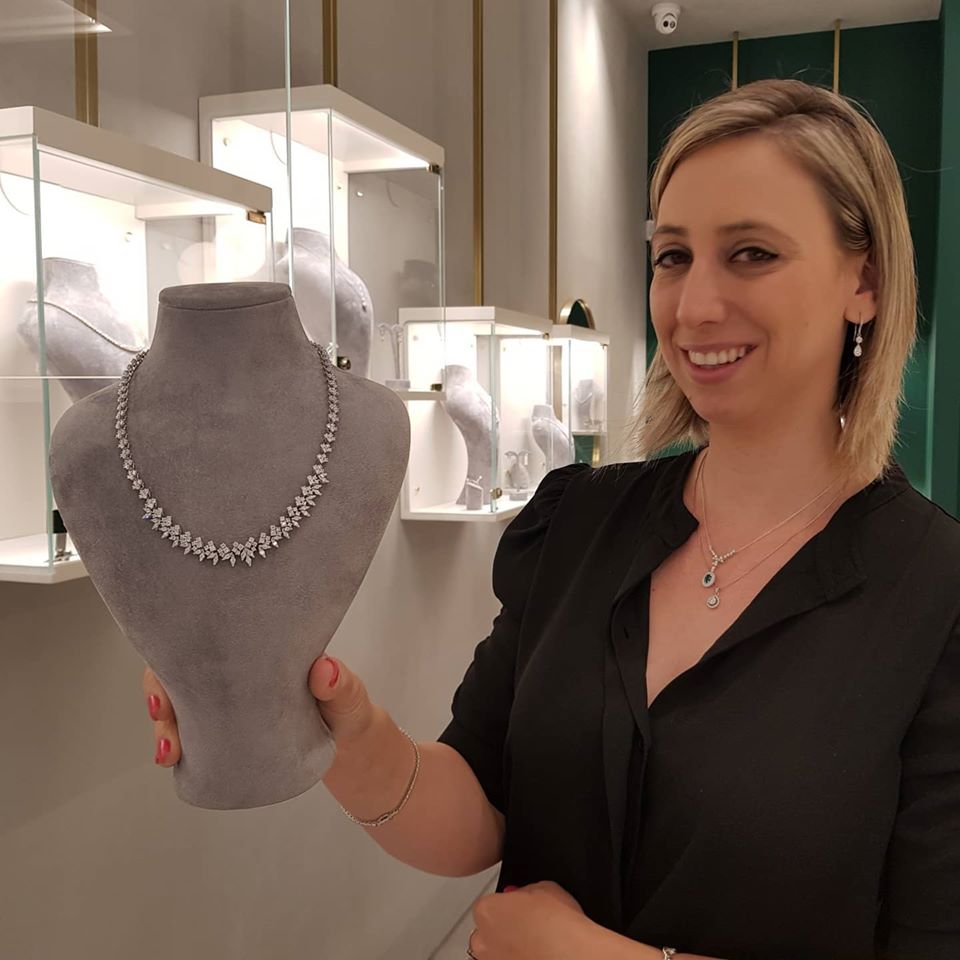
For centuries, diamonds have captured the eyes and minds of people around the world, and their value has reflected that special prominence. However, growing awareness has raised concerns about the hidden costs borne when diamonds are extracted from the ground. These costs include environmental damage, and subpar employment conditions for workers. Mining diamonds from the soil causes air pollution and the environment, deforestation, damage to animal habitats. Moreover, the demand for diamonds can lead to gross violations of the rights of children and exploited workers, who are forced to work in unsafe conditions and at extremely low wages.
Lab grown diamonds offer an exciting alternative--the same beauty, produced in controlled conditions, making for a safer, more environmentally friendly, but still glimmering, diamond. Now X LAB DIAMONDS is bringing the enchantment of laboratory diamonds to Israel, with top quality designer jewelry at unbeatable prices.
X LAB DIAMONDS just launched its first flagship store, at the Ofer Mall in Petah Tikva. There, customers can find stunning designer jewelry inlaid with laboratory diamonds, at particularly attractive prices.
X LAB DIAMONDS laboratory diamonds are manufactured using technology that simulates the conditions inside the earth, thus obtaining diamonds that meet the strict criteria of the world of gemology and are completely identical in their chemical, physical and optical composition to mined diamonds.
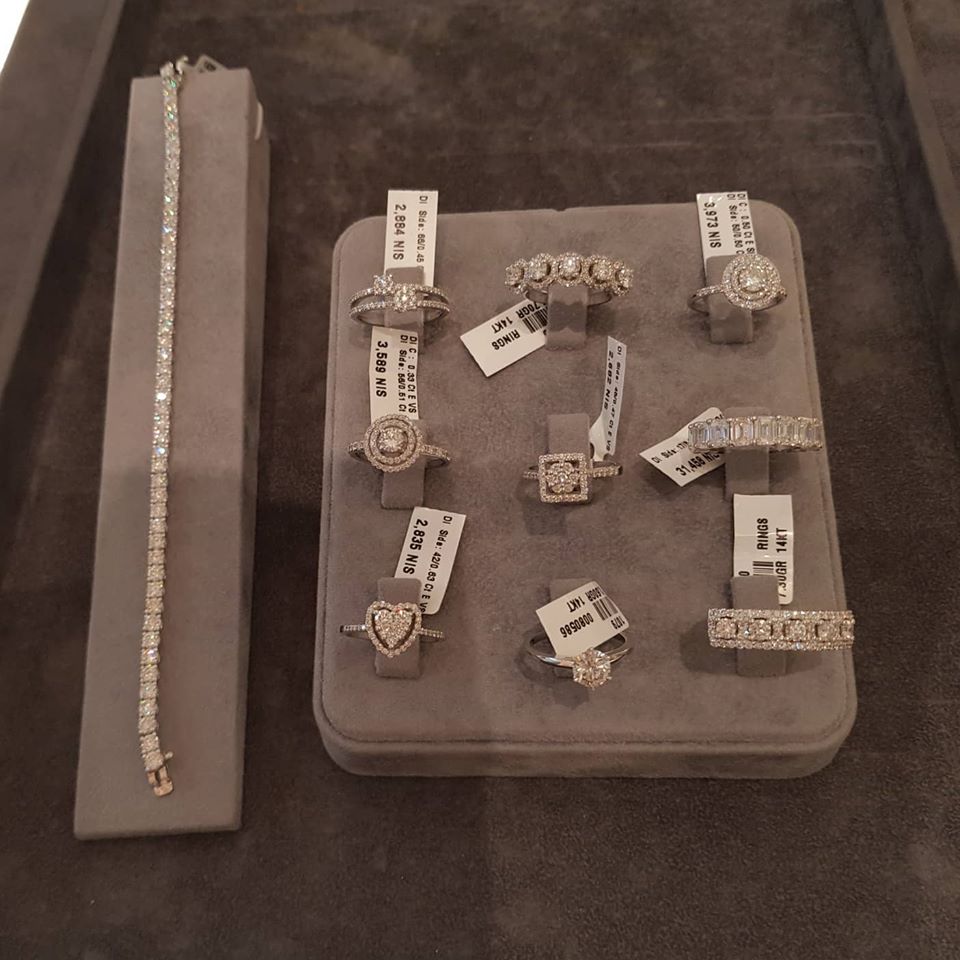
The new jewelry collection uses these top-quality laboratory diamonds at prices that are significantly lower than market prices, so that everyone can be dazzled by the magic of a diamond with an easy conscience. Jewelry from the collection can be seen and purchased directly via the company's new website http://www.xlabdiamonds.co.il/
The chain offers jewelry in unique designs, inspired by the best designers in the world, set with diamonds in a huge variety of sizes and shapes. The diamonds have been created in the world's most advanced laboratories, thus protecting the environment, and workers, and sold for half the price of mining diamonds.
The Laboratory diamonds are polished by skilled diamond polishers, just like mining diamonds and are rated according to the same standards. The X LAB DIAMONDS website has an explanation of the quality and nature of the diamonds offered so that any buyer can easily learn the qualities of lab diamonds and how to distinguish the different qualities of the diamond, addressing the issue: size, shape, level of cleanliness of the diamond and other significant parameters.
X LAB DIAMONDS is truly avant garde, in creating the world’s first laboratory diamond store chain. By offering a variety of gold jewelry in unique designs, all inlaid exclusively with quality laboratory diamonds, created out of social and environmental commitment, the new chain promises to upend the diamond industry in Israel, making many happy customers in the process, and leaving the world a cleaner, better place.
The Royal X collection - The premium collection just launched includes rings, bracelets, necklaces and 14K gold earrings, set with diamonds marked by both size and uniqueness, especially designed and created by X Lab Diamonds to create a particularly dramatic look. Among the remarkable jewelry on offer, you can find a tennis bracelet inlaid with oval stones, a total of 17.8 carats, a tennis ring cut with emerald diamonds (square) - 8.70 carats, a giant diamond around the neck - 14.30 carats diamonds, 3.5 carat stud earrings and a variety of impressive rings for formal events.
The chain also offers hundreds of models of diamond jewelry: rings, bracelets, necklaces, earrings and more. The jewelry is available for purchase both in store and on site. There is something for everyone, and every occasion, with a variety of engagement rings in every color starting from 1,600 NIS.
Hagit Shinover, the CEO and owner of the chain, emphasized that the collection is geared for customers who “are interested in diamond jewelry, but do not want to pay huge sums for them or be partners in the damage caused to the environment by diamond mining.” There’s no longer a need to compromise on what you want, can afford, and care about. Now, any customer “can enter the website or store and leave with a quality diamond jewelry," at discount rates.
X LAB DIAMONDS - the Natural Choice. To see these beautiful diamonds yourself, visit www.xlabdiamonds.co.il, or check out the flagship store at the Ofer Mall in Petah Tiqva (located on the third floor of the mall, next to H&M). You owe it to yourself, and the world will thank you for the conscientious decision.
X LAB DIAMONDS, Ofer Mall, 72 Jabotinsky, Petah Tiqva - Israel
Open Sunday-Thursday, 9:30-22:00, Friday 9:00-15:30,
and Saturday night from half an hour after shabbat ends until 23:00.
Phone: 03-5082742
פייסבוק X Lab Diamonds Israel – יהלומי מעבדה
www.instagram.com/xlabdiamonds_israel
The store is fully accessible for all customers.
Photos by Silvia Golan
- Details
- Written by Pamela Hickman
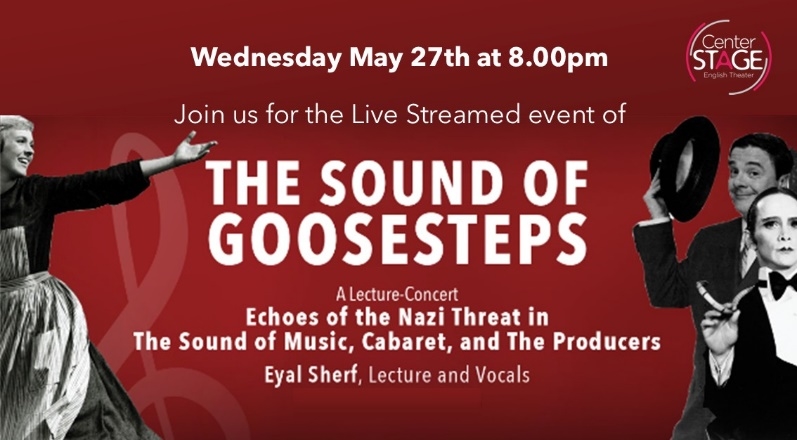
Center Stage presents
The Sound of Goosesteps Echos of the Nazi threat in 3 Musicals
The sound of Music, Cabaret, The Producers
lecture and Vocals by Eyal Sherf
Directed by Udi RazzinWednesday 27.5.20 at 20:00
A life streaming event through Zoom
A Zoom link https://bit.ly/2X70M1I
Meanwhile, enjoy a trailer of the live version of The Sound of Goosesteps.
The program in its entirety will be presented in English.
Much has been said about the representation of Nazism and the holocaust in various genres. Musicals, however, have mostly been overlooked, much due to their perception as escapist entertainment. Yet, as an American art form, the musical is a fascinating source through which to examine changing American attitudes towards Nazism and the holocaust.
Cantor, music theatre performer and researcher Eyal Sherf will present a special virtual edition of his acclaimed lecture-concert The Sound of Goosesteps. This follows a live presentation at Center Stage, the country’s first professional English theater venue, where the show was received enthusiastically earlier this year.
The Sound of Goosesteps is directed by Udi Razzin, and produced by Center Stage’s co-founding executive artistic director Daniella Crankshaw.
What artistic differences arose surrounding the visual representation of Nazism in The Sound of Music, why were the Jewish creators of Cabaret perceived as anti-Semitic, and
how wanting revenge propelled The Producers. All this and more in a fascinating evening incorporating hand-picked videos and live singing.
Picture: Tomer Lupasko
- Details
- Written by Steven Aiello
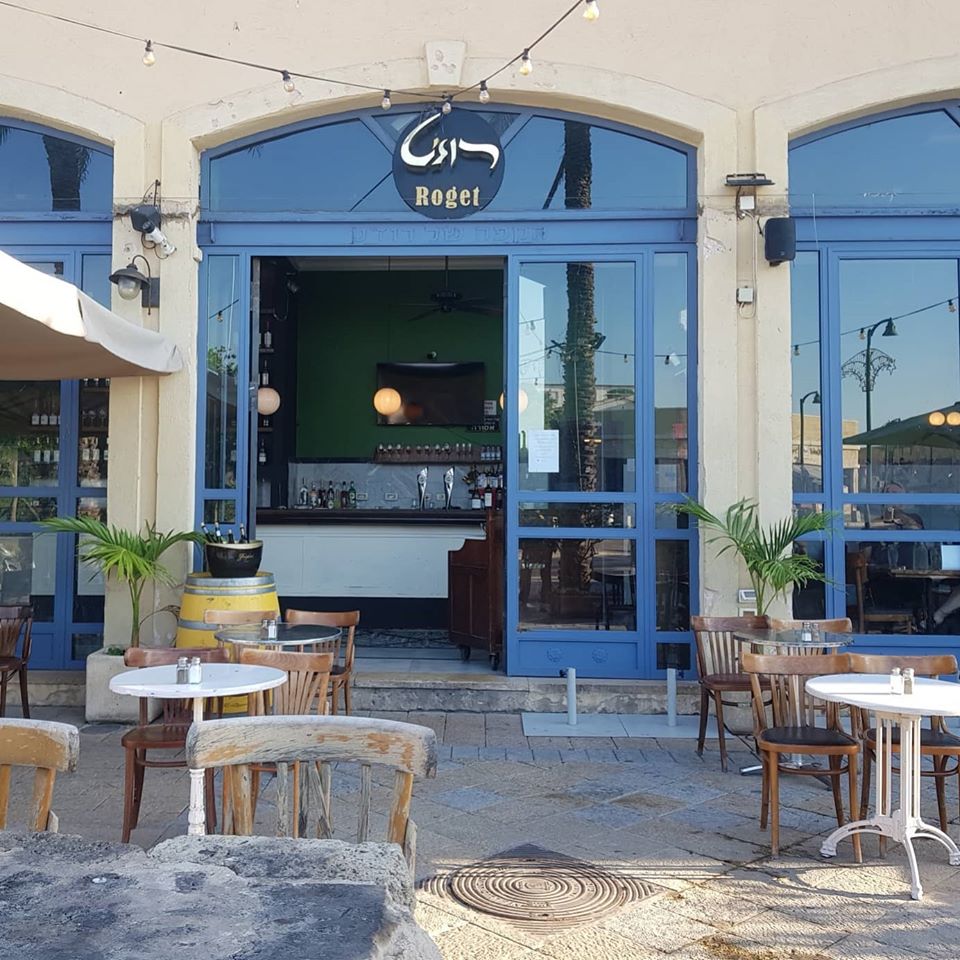
Enoteca, has taken over the clocktower square in the center of Jaffa’s old city with a wine popup bar serving alcoholic beverages at an unbeatable price of 20 shekels a glass, along with authentic dishes from the Arab-Mediterranean kitchen. Yes--20 NIS for a glass of Moreau or Cordon Negro in the heart of old Jaffa!
Owned by the Hinani family, Enoteca, specializing in imported wines and alcoholic beverages, is bringing its rich flavors to the old city of Jaffa, with a modern twist, in the form of a popup wine bar. The popup bar adjoins Cafe Rozette, opposite the Setai hotel, and is a fusion of traditional Arab culture with a top brasserie, serving international quality beverages at the unprecedented price of 20 NIS for a glass or 100 NIS for a bottle.
Among the wide range of wines that the company imports from various countries around the world, white and red wines have been carefully selected to suit the Israeli palate: Chablis from J. Moreau, Cordon Negro-Cava from Freixenet, Rioja Rosado from Muga, Gewürztraminer from
Dresden, Sauvignon Blanc and Pinot Noir from Fornier, Rioja Reserva from Solar Viejo, evacuated Noir from the Fornier Winery's Loire. Alcoholic beverages such as Ouzo, San Miguel beer from the tap, white and red sangria, and more will also be served.
The wines and alcohol complement perfectly the Mediterranean menu, with light dishes carefully prepared by Rosette Hinawi as the perfect complement to a glass of wine, or alternatively serve as appetisers to a full meal with meat from the iconic family butcher shop: merguez sausage (46 NIS); Kebab with a grilled salad (46 NIS); Yoghurt and fresh mint beside stuffed grape leaves and tomato prepared in a Taboon (hearth oven) (NIS 54) and more.
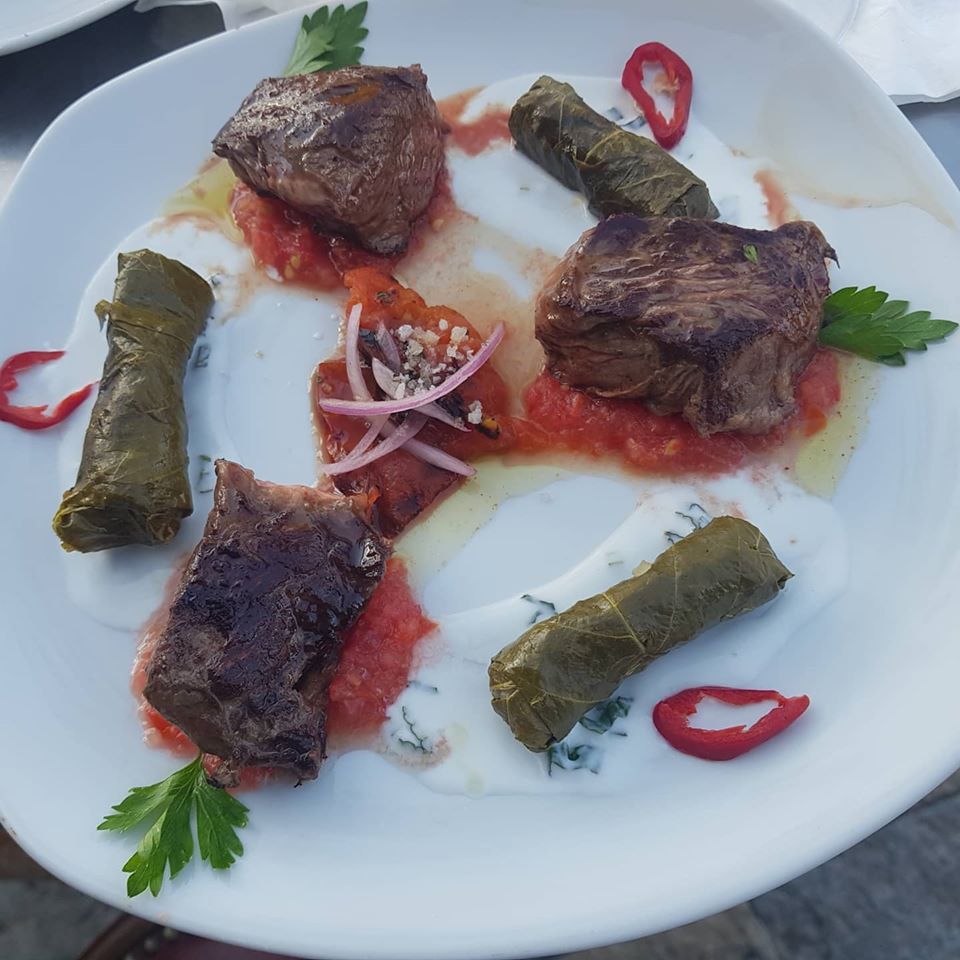
Enoteca Wine Pop Up, provides a relaxing and scenic atmosphere in one of the most popular destinations in Israel. Minutes from the Mediterreanean Sea, it includes a spacious and well-kept courtyard that complements the overall experience. The music, the lovely courtyard, the meticulous interior design and the high ceilings all contribute greatly to the atmosphere, and guests may imagine that they have been momentarily transported abroad. This is sure to become one of the most top spots in Jaffa.
Alongside the pop-up that invites the general public to try a wide range of international beverages at surprisingly low prices, specialty alcoholic beverages from a variety of categories and countries, including imported wines, whiskey, brandy, San Miguel beers, and more will be for sale.
Roget Restaurant
Address: Marzouk and Ezer 2, Jaffa - Clock Square.
Opening hours: Mon-Wed - 8 am - 10 pm, Thu - Sat 8 am - 11 pm.
About Enoteca
Enoteca is a wine and alcohol beverage importing company owned by the Hinawi family.
Enoteca holds a rich portfolio of premium products including well-known wine brands such as Frescobaldi, Freixenet, Pol Roger Champagne, Muga, Tzuba Winery and more.
At the same time, the group also imports alcohol brands - such as KREMLIN AWARD Vodka and HINE Cognac. The beer sector imports the world's leading Spanish beer brand San Miguel and more.
Highly recommended!!!!!!!!!!!
Photo credit: Silvia Golan
- Details
- Written by Silvia

Webinar Registration
